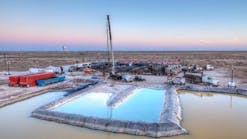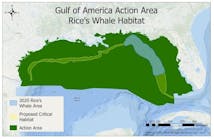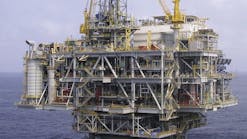By OGJ editors
HOUSTON, June 15 -- The semisubmersible production and processing platform for Gjoa oil and gas field off Norway has been towed out after delays related to weather and hull modifications.
The platform, powered by electricity from shore, will handle production from five subsea templates installed on North Sea Blocks 35/9 and 36/7. Production is to start at undisclosed rates in the fourth quarter.
Gjoa, discovered in 1989, has reserves estimated at 82 million bbl of oil and condensate and 40 billion cu m of gas. The gas overlies thin oil pay in several tilted fault segments of Jurassic Viking, Brent, and Dunlin sands at an average depth of about 2,200 m.
Stabilized oil will move through a new 55 km pipeline to the Troll II pipeline and on to the 203,000 b/d Mongstad refinery north of Bergen. A new 130-km gas pipeline will connect Gjoa with the FLAGS pipeline system in the UK sector for transport to St. Fergus, Scotland.
Gjoa, development of which includes the Vega and South Vega satellites, will be the first production in the Sogn area of the Norwegian North Sea. Vega reserves are estimated at 26 million bbl of oil and condensate and 18 billion cu m of gas.
Statoil, with a 20% interest, is operation during development. GDF Suez E&P Norge AS, 30%, will become operator when production starts. Other interests are Petoro 30%, Shell 12%, and RWE Dea 8%.


